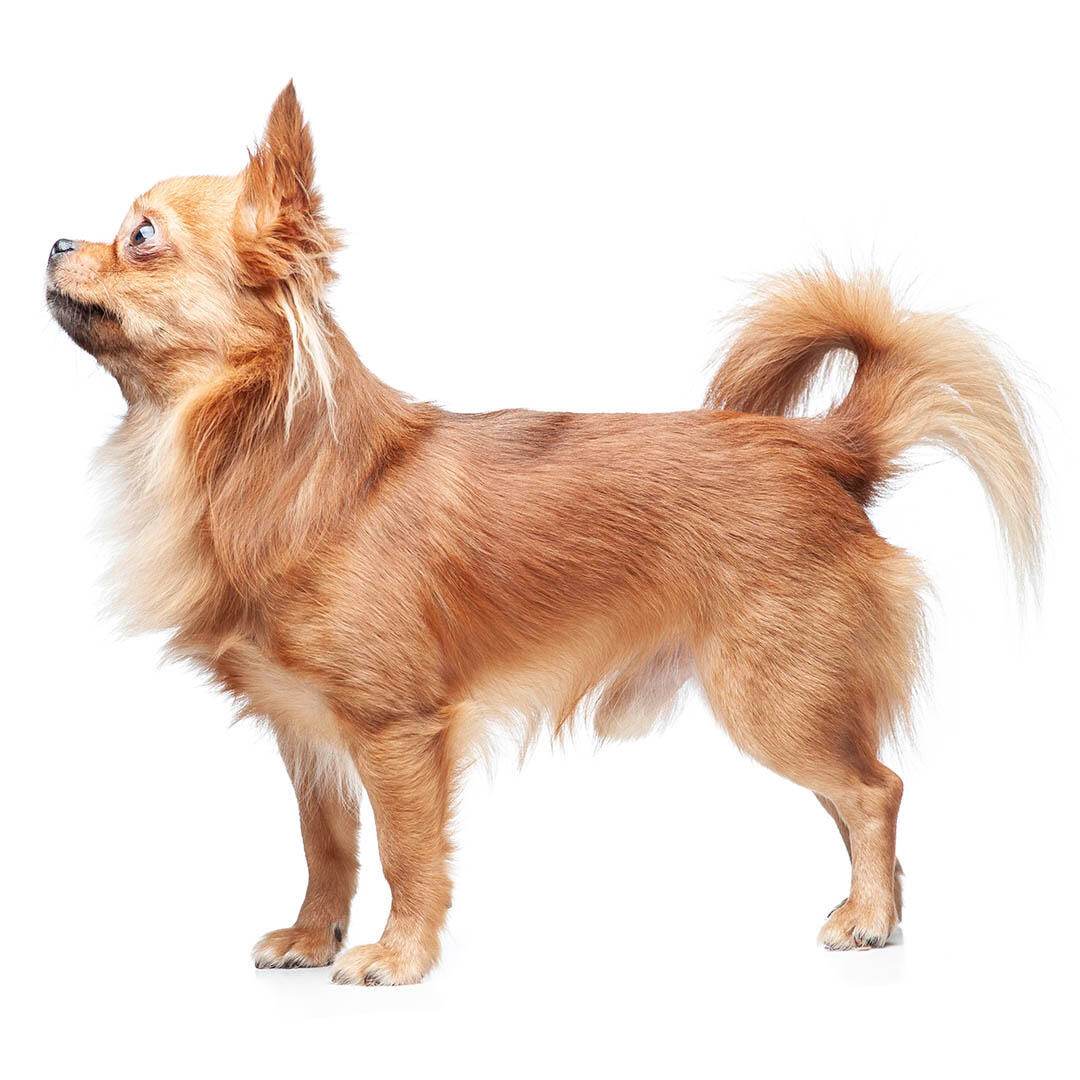
| Family-friendly: | 5/5 |
| Exercise needs: | 1/5 |
| Easy to train: | 4/5 |
| Tolerates being alone: | 1/5 |
| Likes other pets: | 2/5 |
| Energy level: | 3/5 |
| Grooming needs: | 2/5 |
| Shedding: | 2/5 |
As with many small breeds, the Chihuahua can suffer from:
- Patellar luxation
- Legg-Perthes disease
- Tracheal collapse
- Hydrocephalus which is a condition where fluid builds up around the brain and can cause damage.
- Patent ductus arteriosus which is where dogs are built with an extra vessel which can cause problem.
- Mitral valve disease which is where the heart valves become diseased and don't work properly.
- Keratoconjunctivitis sicca (dry eye) which is a painful condition where the tear gland stops working properly.
- Dental problems including decay and tooth loss.
Priority Kennel Club health schemes and testing:
None but there are several recommended schemes that the Kennel Club recommends which can be found here.
The Chihuahua tends to bond closely with one or two people, with whom they will be curious, lively and intelligent, as well as deeply and constantly affectionate. However, without adequate socialisation, the breed will not take kindly to strangers and can appear nervous, yappy and even snappy. Chihuahuas must be socialised as early as possible or they will become anxious in new environments and will not get along with strangers, children and other household pets.
The Chihuahua will suit an owner who may have little space in their homes but still want a lively, affectionate companion who will be able to come everywhere with them as this is not a dog who is easily able to tolerate owner absences.
| Family-friendly: | 5/5 |
| Exercise needs: | 1/5 |
| Easy to train: | 4/5 |
| Tolerates being alone: | 1/5 |
| Likes other pets: | 2/5 |
| Energy level: | 3/5 |
| Grooming needs: | 2/5 |
| Shedding: | 2/5 |
A small dog, called a Techichi, was an important part of Toltec and Aztec cultures. Techichi were the pets of the wealthy and were cremated with the dead in order to take on the deceased's sins so that the person could enter the next world without angering the gods. The dogs were also supposed to guide the deceased through the underworld and fight off evil spirits. Some believe that the Chihuahua is the product of breeding between the Techichi and a small, hairless dog from Asia.
The Chihuahua is a state in Mexico and it’s from this state that the modern Chihuahua dog breed was first exported to America. Theory has it that the modern breed developed from the ancient strains of the Techichi, mixed with small dogs of Mexico, Arizona and Texas.
The Chi can live practically anywhere as long as their owner is home most of the time, enjoys training and grooming, and is aware of the risks the world poses to a very tiny dog. You’ll need to be reasonably fit and active to be able to walk this breed twice a day and bend to lift them up out of the way of danger. You’ll need a securely fenced garden, and this breed is not suited to homes with very small children.
The Chihuahua can adapt to however much exercise you would like to give, within reason. Chihuahuas tend to have bursts of energy where they play excitedly, but do not need a lot of walking – half an hour daily should suffice. It’s recommended that Chihuahuas wear a harness instead of a collar due to their fragile tracheas (windpipes.)
Chihuahuas are the perfect dogs for a small urban space, although they do need to have access to the outdoors for exercise and very frequent toileting.
Toy dogs have a fast metabolism, meaning they burn energy at a high rate, although their small stomachs mean that they must eat little and often. Small-breed foods are specifically designed with appropriate levels of key nutrients and smaller kibble sizes to suit smaller mouths. This also encourages chewing and improves digestion.
Grooming is not a demanding chore with the Chihuahua. The long-coated Chi needs a good brushing and combing once a week. The bib or ruff of the long coats may need a wash, as it can attract food leftovers. Chihuahuas do shed, but, being small, there isn't much hair to lose. It is a good idea to brush a Chihuahua's teeth daily as, with all small breeds, they are prone to a heavy tartar build-up.
Chihuahuas are surprisingly smart and when it comes to training, should very definitely be treated as a ‘real dog’ as they really enjoy working with their owners. Chihuahuas have even been seen in the main ring at Crufts competing in Heelwork to Music!
Just remember when you are training your chihuahua to use the tiniest of treats as rewards.
Like many toy dogs, Chihuahuas often find toilet training difficult and this may well be that owners are unaware of just how tiny their digestive systems are and they need to go out far more often than they expect. They will be quite mature before they can go through the night.
While the Chihuahua can get on with everyone in the family, they are generally too small for young children and not able to cope with boisterous games.
While many dogs are traditionally thought of as being good with children, all dogs and children need to be taught to get on with and respect each other, and be safe together. Even so, dogs and young children should never be left alone together and adults should supervise all interactions between them.